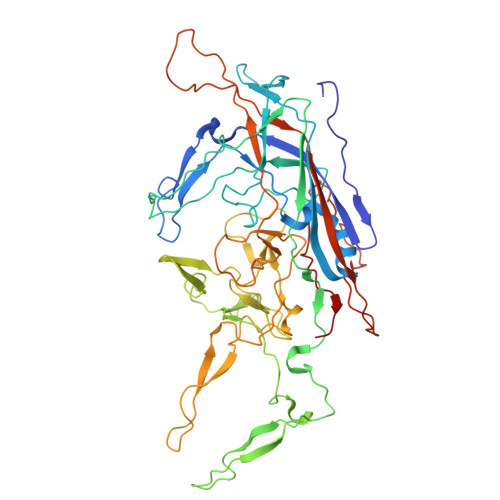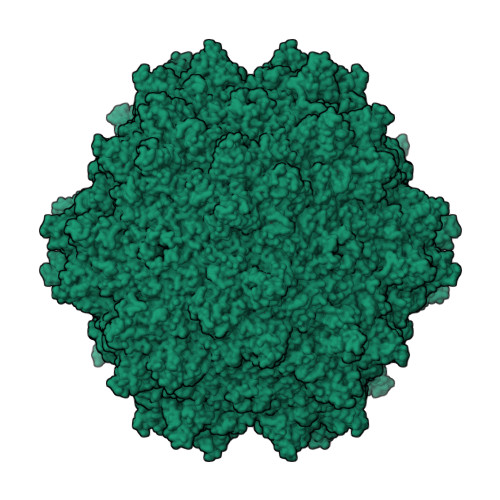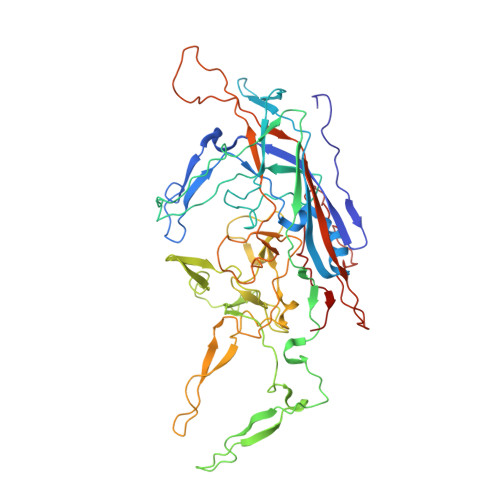Structural basis for the neurotropic AAV9 and the engineered AAVPHP.eB recognition with cellular receptors.
Xu, G., Zhang, R., Li, H., Yin, K., Ma, X., Lou, Z.(2022) Mol Ther Methods Clin Dev 26: 52-60
- PubMed: 35755945
- DOI: https://doi.org/10.1016/j.omtm.2022.05.009
- Primary Citation of Related Structures:
7WJW, 7WJX, 7WQO, 7WQP - PubMed Abstract:
Clade F adeno-associated virus (AAV) 9 has been utilized as therapeutic gene delivery vector, and it is capable of crossing blood brain barrier (BBB). Recently, an AAV9-based engineering serotype AAVPHP.eB with enhanced BBB crossing ability further expanded clade F AAVs' usages in the murine central nervous system (CNS) gene delivery. In this study, we determined the cryo-electron microscopy (cryo-EM) structures of the AAVPHP.eB and its parental serotype AAV9 in native form or in complex with their essential receptor AAV receptor (AAVR). These structures reveal the molecular details of their AAVR recognition, where the polycystic kidney disease repeat domain 2 (PKD2) of AAVR interacts with AAV9 and AAVPHP.eB virions at the 3-fold protrusions and the raised capsid regions between the 2- and 5-fold axes, termed the 2/5-fold wall. The interacting patterns of AAVR to AAV9 and AAVPHP.eB are similar to what was observed in AAV1/AAV2-AAVR complexes. Moreover, we found that the AAVPHP.eB variable region VIII (VR-VIII) may independently facilitate the new receptor recognition responsible for enhanced CNS transduction. Our study provides insights into the recognition principles of multiple receptors for engineered AAVPHP.eB and parental serotype AAV9, and further reveal the potential molecular basis underlying their different tropisms.
Organizational Affiliation:
MOE Key Laboratory of Protein Science & Collaborative Innovation Center of Biotherapy, School of Medicine, Tsinghua University, Beijing, China.
















